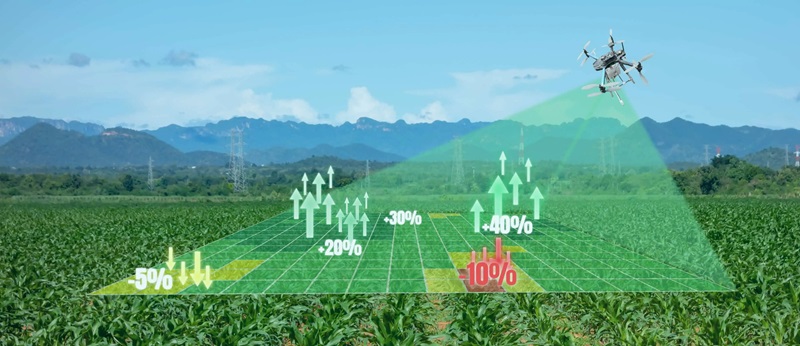Transforming Cybersecurity: The Rise of the Mesh Architecture
5.jpg)
Purushothaman Parthasarathy, Government of India, Senior Director
In an era where digital footprints extend far beyond the physical walls of organizations, the traditional castle-and-moat approach to cybersecurity is rapidly proving inadequate. This realization has paved the way for adopting the cybersecurity mesh, a concept that has gained significant traction among forward-thinking businesses.
Cybersecurity has become an essential business imperative, demanding immediate action to address the vulnerabilities of outdated defenses. Here, the cybersecurity mesh architecture emerges as a transformative force, ushering in a new era of digital security.
The Rise of Cybersecurity Mesh
Traditional security perimeters struggle to keep pace with today’s dynamic IT landscape. Organizations now manage a complex network of IT assets, spanning cloud services, mobile devices, and the Internet of Things (IoT), all extending far beyond physical premises.
Cybersecurity mesh offers a strategic, scalable, flexible, and reliable solution for this evolving environment. It replaces the single, centralized architecture with a distributed model, securing each access point rather than merely enhancing the network. This empowerment allows organizations to enforce granular security policies based on user and device identity, regardless of location.
Furthermore, mesh architecture strengthens an organization’s overall security posture by enabling more precise security controls. It also cultivates a more individualized approach, seamlessly integrating with and adapting to existing security frameworks to suit the decentralized nature of modern businesses.
Implementing Cybersecurity Mesh
The cybersecurity mesh offers a robust, adaptable approach to securing today’s distributed IT environments. Here are the foundational steps for its successful implementation:
- Identity-Centric Security Controls: The cornerstone of the mesh is identity and access management (IAM). Security policies should be identity-centric, providing access based on the user’s unique identity and the context of their request, ensuring authorized access to sensitive data.
- Unified Security Infrastructure: Disparate security tools often obstruct visibility and hinder effective response, emphasizing the need for a unified security infrastructure. By integrating these tools, organizations gain a comprehensive view of their security posture across all platforms, building a more controlled and coordinated defense.
- Scalability and Flexibility: As businesses evolve, their IT environments become more complex. The cybersecurity mesh architecture must be scalable and adaptable to accommodate new security requirements without compromising protection.
- Advanced Threat Detection and Response: Advanced security requires a proactive approach, such as leveraging advanced analytics and AI to detect and respond to threats in real time. This minimizes potential damage and strengthens cyber resilience.
The cybersecurity mesh architecture represents a paradigm shift, aligning perfectly with the goals of modern organizations and gradually shifting away from the traditional, centralized concept, thereby empowering businesses to address the challenges of today’s complex IT sphere.
Ransomware Defense and Recovery: Building Resilience Against Digital Extortion
Ransomware remains one of the most pervasive and damaging threats in cybersecurity. With attacks growing in frequency and sophistication, organizations face a critical challenge. Cybersecurity Ventures reports an exponential rise in compromised cybersecurity, with ransomware attacks occurring every 11 seconds in 2021, compared to every 40 seconds in 2016. This alarming trend underscores the urgent need for robust defenses and swift recovery strategies.
Defending Against Ransomware
The first line of defense against ransomware involves implementing comprehensive cybersecurity practices:
- Regular Updates and Patch Management: It is paramount to keep systems current with the latest security patches. This practice mitigates the vulnerabilities that ransomware often exploits, as evidenced by a Ponemon Institute study revealing that 57% of cyberattack victims could have prevented breaches with readily available patches.
- Advanced Email Filtering: Phishing emails are common for external forces to implement ransomware. Therefore, it is crucial to deploy advanced email filtering solutions alongside employee education to identify and report phishing attempts.
- Regular Backups and Segmentation: Maintaining regular, secure, segmented backups is vital. The ability to quickly restore data minimizes reliance on ransom payments. Notably, companies with accessible backups reduced ransomware costs by over 50%.
Recovery and Response
Even the best defenses can be breached. A well-prepared incident response plan should include:
- Immediate Isolation of Affected Systems: To prevent the spread of ransomware, it’s imperative to isolate affected systems immediately from the network.
- Activation of the Response Team: A designated response team should swiftly assess the extent of the attack’s reach and activate containment and eradication strategies, such as securing data backups and launching recovery processes.
- Legal and Regulatory Considerations: To effectively navigate the aftermath of an attack, it is crucial to engage with law enforcement and comply with all legal and regulatory requirements.
Navigating Through Regulatory Compliance and Cybersecurity Legislation
The evolution of cyber threats and security frameworks goes hand-in-hand; as cyber threats evolve, so do the strategies deployed to eliminate them. However, organizations can remain several steps ahead of digital challenges with the proper framework. Regulatory compliance goes beyond simply ensuring legal obligations. It defines how organizations approach cybersecurity, providing adequate protection for sensitive information.
Global and Regional Regulations
Organizations today operate in a world governed by diverse cybersecurity regulations. From the European Union’s General Data Protection Regulation (GDPR), which sets strict data privacy standards, to California’s Consumer Privacy Act (CCPA), empowering consumers with control over their personal information, compliance is both a legal mandate and a strategic advantage.
India’s Digital Personal Data Protection Act (DPDPA):
India’s recently proposed DPDP Act is poised to reshape the cybersecurity landscape. The Act focuses on safeguarding personal data as an essential aspect of informational privacy and mandates that organizations devise stringent data protection measures to enhance transparency, accountability, and robust cybersecurity practices.
Data Localization: Furthermore, the Act may implement data localization requirements, mandating specific data categories to be stored within India, posing challenges and opportunities for the security landscape of tomorrow.
Future-Proofing Through Proactive Cybersecurity Strategies
The cybersecurity mesh empowers organizations with a dynamic defense system. However, robust protection requires a proactive approach that predicts threats before they can permeate security networks.
Proactive Measures in Cybersecurity Mesh
Organizations must adopt proactive security measures to stay ahead of cyber threats within the cybersecurity mesh framework. This involves continuously monitoring network activity to detect anomalies before they become serious threats. Utilizing behavior analytics and machine learning can help identify unusual patterns that precede a security incident. Furthermore, they should leverage automated response protocols, as they can significantly reduce the time to respond to threats, limiting potential damage. These automated systems can be programmed to execute predefined security actions when certain threat conditions are met, thereby increasing the overall speed and efficiency of the cybersecurity response.
Enhancing Ransomware Readiness
Regarding ransomware, proactive strategies extend beyond prevention, including robust preparedness and response planning. Simulation of ransomware attacks, for instance, can be an effective tool for testing the resilience of an organization’s systems and response protocols. This practice helps identify weaknesses in the current approach and can substantially improve defensive tactics and recovery processes.
Additionally, allocating resources to build threat intelligence platforms can provide early warnings about new ransomware strains and tactics being used in the wild. This allows organizations to adapt their defenses to the latest threats, creating innovative and advanced strategies for besting cybercriminals.
Compliance as a Continuous Process
In the case of regulatory compliance, such as in a comprehensive legislation landscape like India’s DPDA, organizations must view compliance as a continuous process rather than a one-time task. They should conduct regular audits and compliance checks, as well as update security policies. Moreover, Privacy impact assessments (PIAs) should be performed when introducing new processes or technologies to ensure that personal data handling complies with the latest regulations. Training and awareness programs should also be deployed to inform all employees about their roles and responsibilities in safeguarding personal data.
The Role of Leadership in Cybersecurity Evolution
Leadership and communication are the cornerstones of effective cybersecurity. CISOs and other cybersecurity leaders play a pivotal role in incorporating these advanced cybersecurity strategies into the fabric of the broader business strategy. Their leadership extends beyond ensuring the implementation of technologies; it encompasses fostering a culture of security awareness and compliance throughout the organization.
Communication is the second pillar of robust cybersecurity. Effective communication between IT departments and executive leadership creates a collaborative approach that ensures all decision-makers understand the magnitude of investing in advanced cybersecurity measures and regulatory compliance to boost an organization’s overall risk management strategy.
Collaborative Efforts Towards a Secure Cyberspace
The digital ecosystem is built on interconnectivity, and cybersecurity is no exception. Only when organizations stand together and invest in collaborative efforts can they design an impermeable online defense system.
Participation in sector-specific cybersecurity alliances and information sharing with national and international organizations foster an exchange of knowledge. This collective intelligence provides invaluable insights and early warnings about emerging threats, allowing organizations to take immediate and proactive countermeasures.
Furthermore, by sharing best practices, security strategies, and threat intelligence, organizations can collectively elevate their security posture, strengthening individual defenses and fortifying the broader digital infrastructure, creating a more resilient front against cyberattacks.
The Road Ahead: A Robust and Digitally Secure Network
In today’s complex landscape of cyber threats, organizations must utilize a multi-layered approach to security, such as implementing a cybersecurity mesh architecture, fortifying defenses against ransomware, and ensuring rigorous regulatory compliance. These measures are most effective when leveraged as a holistic strategy that includes proactive defenses, continuous compliance, leadership engagement, and collaborative security initiatives. By embracing these multifaceted approaches, organizations can protect their digital assets and data in our increasingly interconnected world, building resilience and trust in the face of ever-evolving cyber threats.
The Journey Into Industry
Mr. Purushothaman Parthasarathy is a seasoned information security leader with over 20 years of experience. He excels in data security compliance, particularly with ISO/IEC 27000 standards, and possesses deep acumen in crafting risk management strategies aligned with ISO 27005. This is evidenced by his contribution to minimizing business disruption through effective security incident management.
Mr. Parthasarathy’s leadership extends beyond technical expertise. He successfully led an 800-member organization across over 50 locations, focusing on cybersecurity, communication, and surveillance. His comprehensive knowledge and skills are reflected in his collaboration with esteemed institutions and experts on specialized cyber projects and comprehensive security policies and SOPs.
As a Senior Director with the Government of India’s Law Enforcement department, Mr. Parthasarathy has spearheaded network security strategies for large enterprises with over 2500 critical ICT assets. He leveraged diverse VAPT frameworks and conducted in-depth risk assessments, integrating cyber threat intelligence (CTI) through adversary emulation to create a tailored enterprise risk management (ERM) framework aligned with ISO 27005.








